Olmec culture was unknown to historians until the mid-19th century. In 1869, the Mexican antiquarian traveler José Melgar y Serrano published a description of the first Olmec monument to have been found in situ. In the latter half of the 19th century, Olmec artifacts such as the Kunz Axe (right) came to light and were subsequently recognized as belonging to a unique artistic tradition.
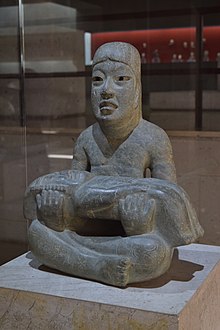
The name “Olmec” means “rubber people” in Nahuatl, the language of the Aztec. The term “rubber people” refers to the ancient practice, spanning from ancient Olmecs to Aztecs, of extracting latex from Castilla elastica, a rubber tree in the area. The juice of a local vine, Ipomoea alba, was then mixed with this latex to create rubber as early as 1600 BCE.
Olmec civilization
The Olmecs were the earliest known major civilization in Mesoamerica. They lived in the tropical lowlands of south-central Mexico. The Olmecs flourished during Mesoamerica’s formative period, dating roughly from as early as 1500 BCE to about 400 BCE. Pre-Olmec cultures had flourished in the area since about 2500 BCE.
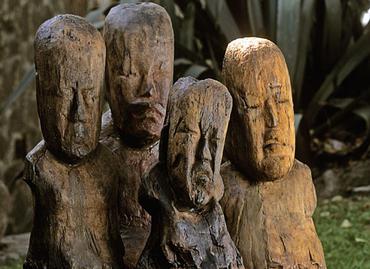
Past finds of Olmec remains ritually deposited at El Manati shrine (near San Lorenzo) moved this back to “at least” 1600–1500 BCE.
Art and Culture
The Olmec culture was first defined as an art style, and this continues to be the hallmark of the culture. Wrought in a large number of media – jade, clay, basalt, and greenstone among others – much Olmec art, such as The Wrestler, is naturalistic. While Olmec figurines are found abundantly in sites throughout the Formative Period, the stone monuments such as the colossal heads are the most recognizable feature of Olmec culture.
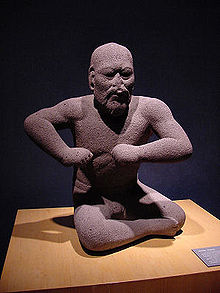
The Wrestler 
Olmec Head
The most recognized aspect of the Olmec civilization are the enormous helmeted heads. The heads were carved from single blocks or boulders of volcanic basalt, found in the Tuxtlas Mountains. The flat-faced, thick-lipped heads have caused some debate due to their resemblance to some African facial characteristics. Based on this comparison, some writers have said that the Olmecs were Africans who had emigrated to the New World.
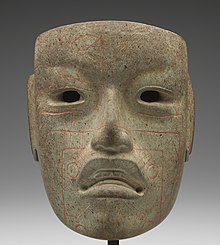
Jade Face Mask 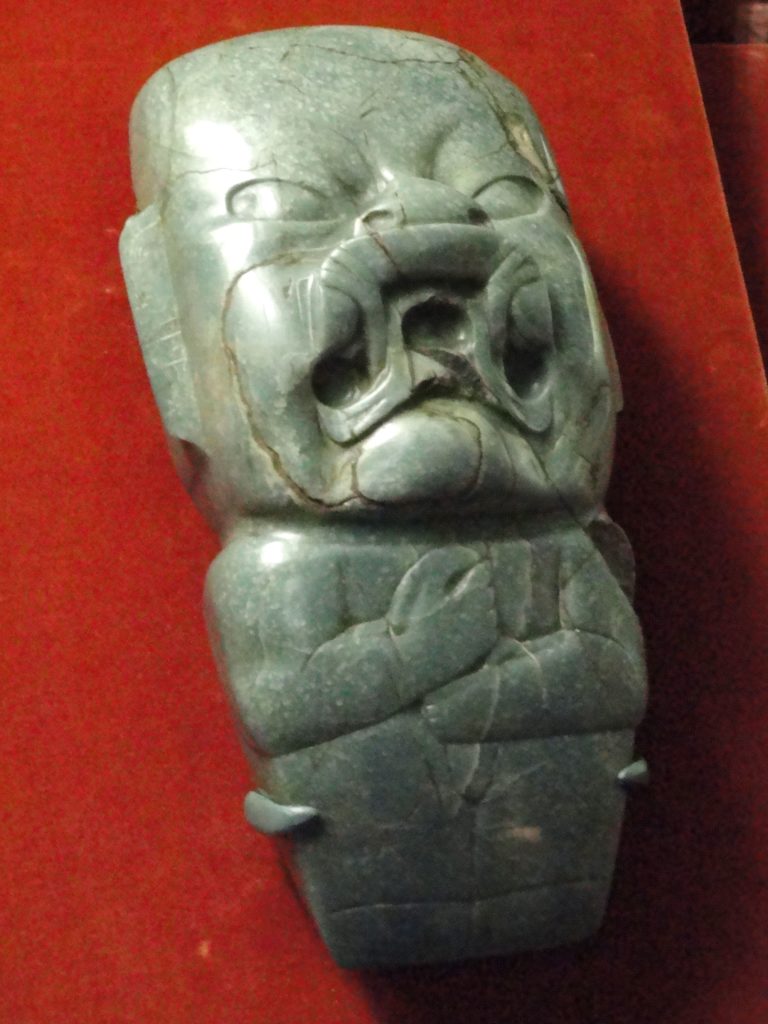
Kunz Axe
Another type of artifact is much smaller; hardstone carvings in jade of a face in a mask form. Jade is a particularly precious material, and it was used as a mark of rank by the ruling classes.By 1500 BC early Olmec sculptors mastered the human form.
The Kunz axes (also known as “votive axes”) are figures that represent werejaguars and were apparently used for rituals. In most cases, the head is half the total volume of the figure. All Kunz axes have flat noses and an open mouth.
Religious Practices
Olmec religious activities were performed by a combination of rulers, full-time priests, and shamans. The rulers seem to have been the most important religious figures, with their links to the Olmec deities or supernaturals providing legitimacy for their rule. There is also considerable evidence for shamans in the Olmec archaeological record, particularly in the so-called “transformation figures”.
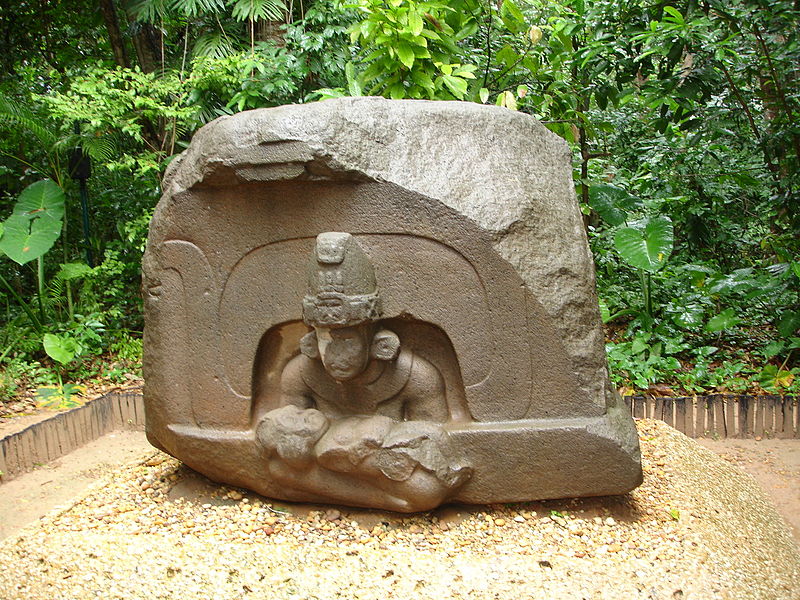
Although the archaeological record does not include explicit representation of Olmec bloodletting,researchers have found other evidence that the Olmec ritual practiced it. Olmec art shows that deities such as the Feathered Serpent and a rain supernatural were already in the Mesoamerican pantheon in Olmec times


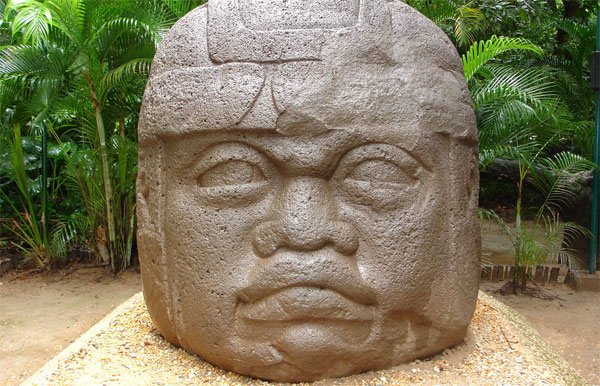
Comment here